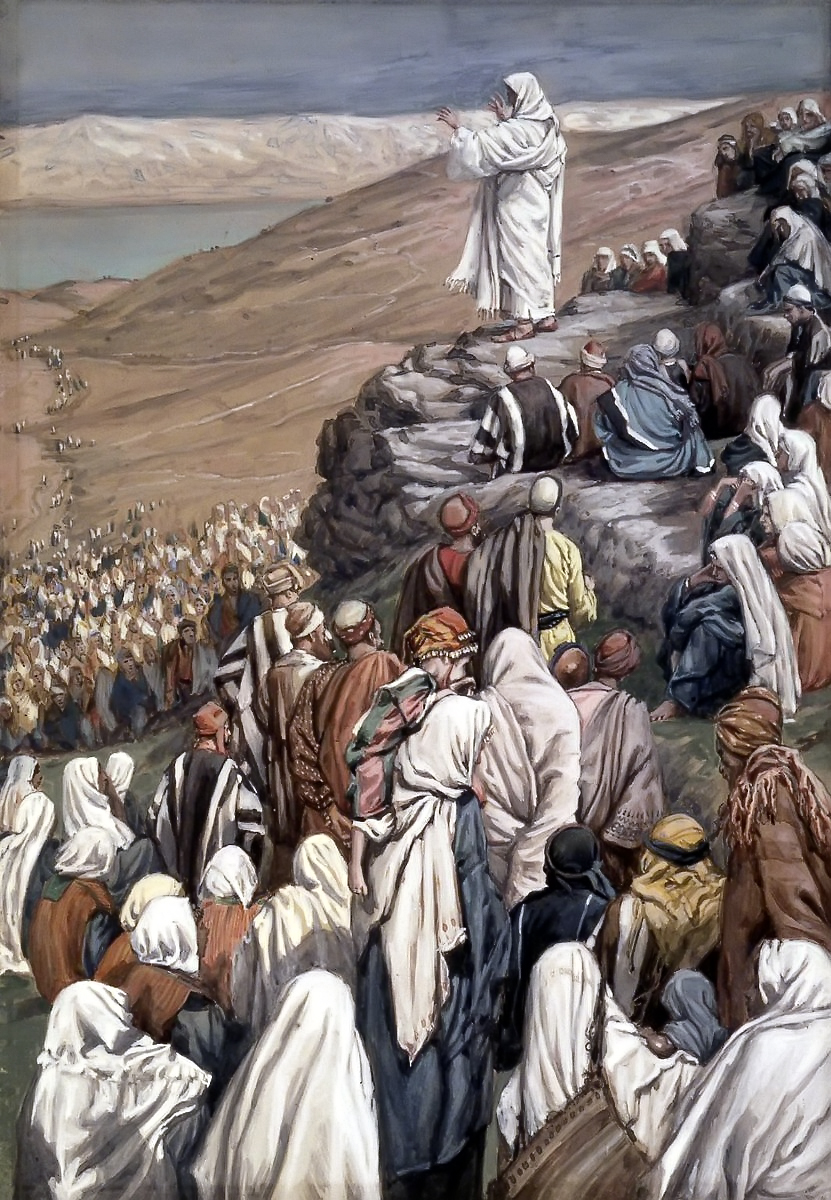
James Tissot’s “David takes Saul’s spear and water bottle”

James Tissot is one of the most famous illustrators of the Bible. It is difficult to do an Internet search for a Bible painting without discovering one of Tissot’s works.
The Old Testament Supplemental Scripture lesson for this Sunday (Epiphany 7C CWS Lectionary) is 1 Samuel 26:7-25. David has been anointed to be the next king of Israel. Saul, the present king, knows this and hates David for it. He has been chasing David and his men all around the Judean countryside.
David had already spared King Saul’s life once in the cave of Adullam (1 Samuel 24). There, David cut off a corner of Saul’s robe while Saul was relieving himself in the cave. But David did no harm to Saul for he was still “the Lord’s anointed” (1 Samuel 24:6).
After the incident in the cave, Saul returned to his palace. But David once again became the object of Saul’s unrelenting manhunt.
Tissot beautifully illustrates the action of the scene. David and one of his men, Abishai, sneak over to the Israelite army who were encamped in the Desert of Ziph. Saul had 3,000 men in his army, yet – amazingly – they were all asleep when David and Abishai sneak into the camp. King Saul is lying asleep. Abner, the commander of Israel’s army, was also asleep nearby.
David and Abishai quietly pull Saul’s spear out of the ground and remove his water jug.
David later calls out to Saul to let him know that his items have been taken. He wants Saul to know that he respects him as the Lord’s chosen king, even though Saul has been chasing David around the countryside. David has once again spared the king’s life.
This account between David and Saul has two unique features that are recorded at the end of chapter 26. Though David has been harassed and pursued, still he has a firm trust in his God. That trust is evident when he proclaims to Saul, “As surely as I valued your life today, so may the Lord value my life and deliver me from all trouble” (1 Samuel 26:24).
As far as we know, this is the last time David and Saul encounter each other. Though Saul has forsaken the Lord, still he confesses his sins. Then, as they part, Saul calls out to the young fugitive: “May you be blessed, my son David” (1 Samuel 26:25). These were Saul’s last words to the next king of Israel.

James Tissot (1836-1902) was a French painter and printmaker. His mother was a devout Catholic, but it seems that James gave up his faith during his career. Tissot’s youth was spent near a port, so his early paintings were depictions of shipping vessels and boats. His parents were involved in the fashion industry, so it is believed that this attributed to Tissot’s attention to detail in the clothing of his subjects in his later paintings.
Tissot’s style continually evolved during his career. He had a job cartooning for Vanity Fair. In his early career, his paintings exemplified Romantic obsessions with the Middle Ages. At times, his paintings had a European flair. Other paintings had an oriental influence. Though his subjects and style changed, his technique remained impeccably craftsman-like and professional.
In 1885, Tissot claimed to have had a religious revelation. This resulted in Christ the Comforter, a large painting showing Christ comforting two downtrodden pilgrims in the ruins of the Cour de Comptes in Paris. His religious experience led Tissot to a re-conversion to Catholicism. He devoted his remaining years primarily to illustrating the Life of Christ and the Old Testament.
At a time when French artists were still working in impressionism, pointillism, and heavy oil washes, Tissot was moving toward realism in his watercolors. To assist in his completion of biblical illustrations, Tissot made several trips to the Holy Land for research on the landscape and people.

Tissot has a series of 365 gouache (a technique of painting with opaque watercolors prepared with gum) showing the life of Christ. He also finished 80 Old Testament paintings before he died.
Though Tissot’s career as a painter was long and distinguished, he is best known for his Bible illustrations. We are extremely grateful for these wonderful depictions of Christ and the other biblical individuals and events.






